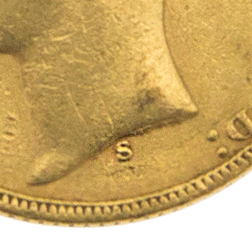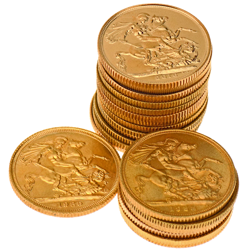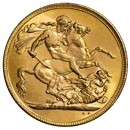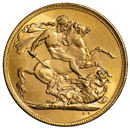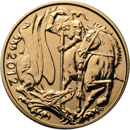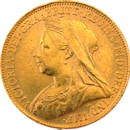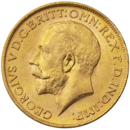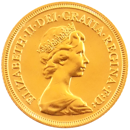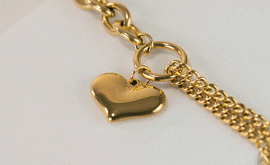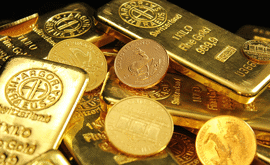How to Find Out the Value of Your Sovereign Coins
What is the face value of a Gold Sovereign?
Gold Sovereign coins have a face value of £1, as that was its numerical value at the time of circulation. However, the face value of a Sovereign does not reflect its true value at this point in time. For example, the British Gold Sovereign is one of the most famous coins in the world, first introduced into circulation in 1489, while King Henry VII reigned. While the coin may have a face value of £1, this was based on old currency values. Uncirculated bullion coins have a real value based on the pure gold content, meaning the coin is worth a lot more than £1.
Other factors that affect Gold Sovereign Prices
Giving you the true value of your sovereign coins is not as easy as it would seem. While many Sovereigns are worth their bullion value, some Sovereigns have a bigger, numismatic value. The true value of your coin can also be dependent on:
- The year the coin was minted
- The Royal Mint branch that produced it
- The number of coins produced at that mint that year
- Total number of coins remaining from that mint of that year
- If the coin was a bullion or proof issue coin
- The condition of your coin
Sovereign Heads & Reverse Designs
From George IV, up to today’s fifth portrait of Queen Elizabeth II, the modern gold sovereign has witnessed the rule of several monarchs, and some sovereign coins featuring certain sovereign head portraits tend to be more valuable than others.
In 1891, all gold coins struck before the Victorian era had been recalled when demonetisation came into effect, meaning many early sovereign coins from the era of George III and William IV are scarcely seen today, making them more valuable.
The sovereign was discontinued completely during WWI; however, a proof set of sovereign coins were created for the reign of Edward VIII in 1937. These were never released due to the King’s abdication the following year. These coins are very rare and have previously fetched extremely high prices in auctions.
The famous St George and the Dragon design by Benedetto Pistrucci has graced the reverse of the sovereign coin since 1817 - yet occasionally other commemorative designs have featured, making these coins more interesting to coin collectors. The 1989 coin issued to celebrate the 500th anniversary of the sovereign is a perfect example of this. The coin features a commemorative design showing an enthroned portrait of Queen Elizabeth II on the obverse, while the reverse features the royal coat of arms superimposed onto the Tudor double rose. A rare and beautiful design, this is one highly prized by numismatists.
A new Ensigns Armorial was commissioned for the reverse of Queen Victoria’s first sovereign, depicting a shield rather than the traditional St George design. Victorian Shield Sovereigns were only issued up to 1875 so are often a little more valuable to collectors.
Sovereign Mint Marks & Die Numbers
Some sovereigns are considered rare because very few were produced in a specific location. Gold sovereign coins were produced in Royal Mint branches across the world during only the late 19th century up until the early 20th century. Including the usual production in London, Royal Mint also had branches in Australia, Canada, South Africa, and India. Certain dates from some of these branch mints are in high demand by collectors which can make them worth more, so it’s definitely worth checking to see if your coin features a mint mark from one of these countries. These marks are seen as a very small single letter pertaining to each mint and can usually be found stamped into the design of the coin.
On some sovereigns, die numbers can be found. These appear on some of the older Victorian sovereigns with the shield reverse design and are located beneath the wreath near the bottom of the coin. These can add extra interest for coin collectors and can sometimes mean extra value.
How is a Sovereign Coin Value Calculated?
A gold Sovereign is literally worth its weight in gold, which is known as its bullion value. A gold Sovereign coin weighs 7.98g and is minted in 22ct gold, meaning it is made up of 91.67% fine gold. Each sovereign contains 7.32 grams of fine gold.
The bullion value of your Sovereign is found by multiplying the fine gold content by the spot price at that time.
The price of gold changes constantly, so it's worth keeping an eye on the latest prices to find the best time to sell your coins. You can see the latest gold prices in the header at the top of the page or visit our dedicated live gold price and live silver price pages.
Where to sell your Sovereign Coins?
If you’re looking to sell gold Sovereigns to a bullion dealer, Atkinsons Bullion is ready and waiting to purchase the coins you have in your portfolio. You can head over to our Sell Gold Coins page where you can find the coin and the current price you’ll get for them or simply select the coin you wish to sell from the list below.
If you cannot find your coin listed, you can email us at info@atkinsonsbullion.com or call us on 0121 355 0620 for a quote.
Why Join Our Mailing List?
By signing up, you'll gain access to exclusive updates, early announcements, and tailored insights into the world of bullion and precious metals.

Latest Updates On Bullion

New Releases

Special Offers

Market Analysis
This blog represents one person’s opinion only. Please note, gold and silver prices may go down as well as up. Atkinsons Bullion & Coins accepts no responsibility for any losses based on information we have provided. We do not offer investment advice. Please carry out your own research before making an investment decision.


